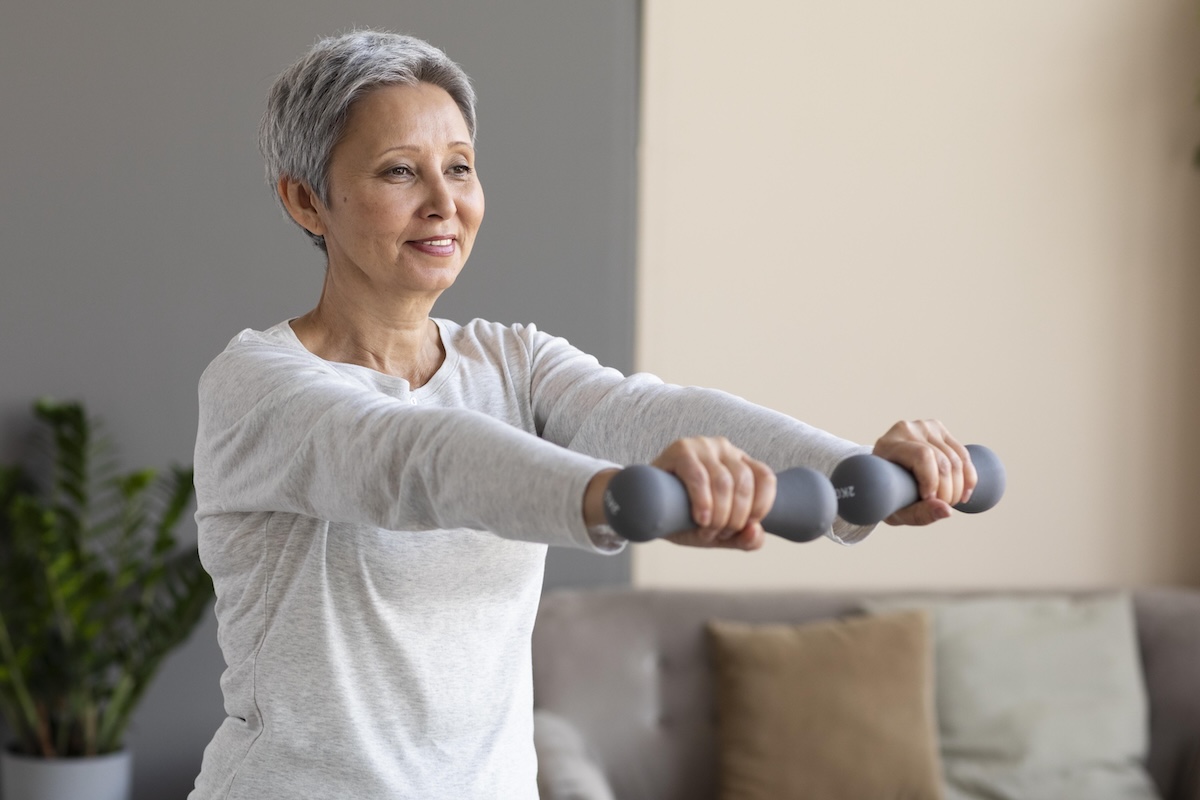As we get older, staying active becomes more important than ever. Regular movement can help improve balance, boost strength, and increase energy. It also helps protect against health problems like heart disease, joint stiffness, and depression. But many seniors feel unsure about how to start exercising—especially if they don’t want to join a gym or leave the house.

The good news is that you don’t need expensive equipment or a big workout plan to stay fit. Simple exercises done at home can have big benefits. Whether you’re just starting to get active again or already have a routine, adding gentle exercises to your daily life can improve your physical and mental well-being. In this article, we’ll explain why exercise matters, what types are best for seniors, and how easy home exercises can help you feel stronger, steadier, and more independent.
Why Movement Matters as We Age
It’s common to lose muscle mass, balance, and flexibility as we age. This can lead to a higher risk of falls, slower movements, and less confidence in daily tasks. But regular exercise can slow down or even reverse some of these effects. It helps improve strength, heart health, bone density, and coordination—all of which support a safer and more active lifestyle.
Exercise is also linked to better mood, improved memory, and more restful sleep. Even a small amount of movement each day can help reduce stress and boost confidence.
The key is to choose movements that are gentle, low-impact, and easy to adapt to your needs.
Types of Exercises That Support Senior Health
There are a few types of movement that offer the most benefits for older adults. Each type plays a different role in keeping your body and mind in good shape.
-
Balance exercises help prevent falls by improving coordination and core strength.
-
Strength exercises support muscles and bones, making daily tasks like lifting groceries or climbing stairs easier.
-
Flexibility exercises reduce stiffness and help keep joints moving freely.
-
Aerobic exercises improve heart and lung health, boost endurance, and support a healthy weight.
You don’t need to do all of these at once. A simple mix of two or three types, done a few times a week, can already make a noticeable difference.
Getting Started Safely
Before beginning any exercise routine, it’s always a good idea to talk with your doctor—especially if you have chronic conditions like arthritis, heart problems, or balance concerns. Your doctor can help you choose the right movements for your needs and may recommend avoiding certain positions or exercises.
Start slowly and listen to your body. If something feels painful or causes shortness of breath or dizziness, stop and rest. Over time, as your strength and stamina grow, you can add more repetitions or try new movements.
Let’s explore a few easy exercises that most seniors can try safely at home.
Simple and Effective Home Exercises
One of the best parts about these exercises is that you don’t need a gym membership or heavy weights. Many can be done using only a sturdy chair, a wall, or a pair of light household items like water bottles or canned goods.
1. Chair Marching
Sit in a sturdy chair and lift one knee, then the other, as if you’re marching. Move your arms too for extra motion. This helps improve circulation and warms up the body.
2. Seated Leg Lifts
While sitting upright, extend one leg and hold it out straight for a few seconds, then lower it back down. Switch legs. This strengthens the thighs and supports balance.
3. Wall Push-Ups
Stand a few steps away from a wall. Place your hands against the wall and bend your elbows to bring your chest toward it, then push back. This strengthens the arms and chest without strain on the joints.
4. Heel-to-Toe Walking
Walk in a straight line, placing the heel of one foot directly in front of the toes of the other. This is a great balance exercise and helps prevent falls.
5. Gentle Stretching
Stretch your arms overhead, gently twist your upper body, or reach toward your toes while sitting. These movements improve flexibility and reduce stiffness.
You can do these exercises at your own pace, starting with just five to ten minutes a day. Over time, you may feel more flexible, steadier on your feet, and more confident doing everyday tasks.
Making It a Habit
The hardest part of any exercise plan is getting started and sticking with it. Try setting a regular time each day, like after breakfast or before lunch, to do a few movements. You can also break your sessions into smaller chunks throughout the day.
Playing music or exercising with a friend, partner, or family member can make the time more enjoyable. Some seniors like to follow along with online videos made for older adults, which offer gentle, guided routines you can do from your living room. Even light daily movement, like gardening, walking around the house, or doing chores, counts toward staying active.
